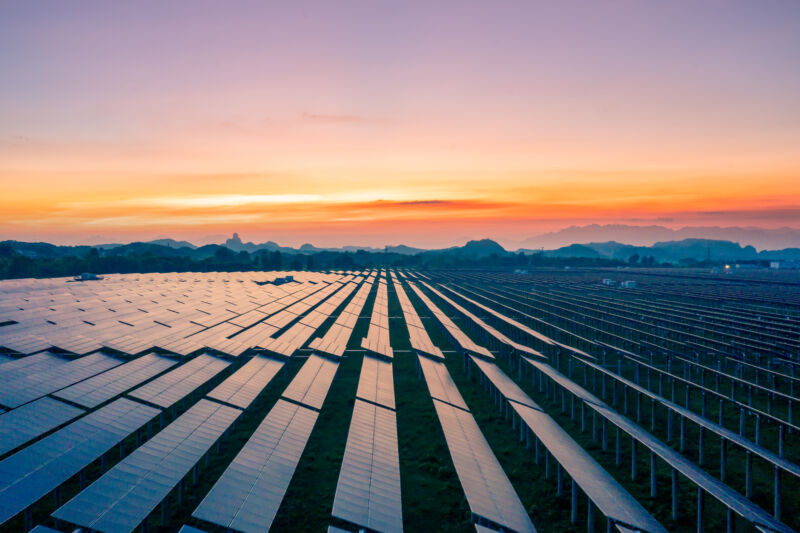
Enlarge / All those supports require a lot of aluminum. (credit: Longhua Liao)
Once solar panels are operative, they produce electricity without carbon emissions. But making and installing them does involve some emissions. Most of the worries there have focused on elements that go into the panels themselves, like gallium, cadmium, germanium, indium, selenium, and tellurium. But, according to new research, the massive amount of aluminum needed to house the solar rigs of the future could create its own problems.
“I hadn’t realized just how much aluminum was required for the frames, and the modules, mountings, and inverters,” Alison Lennon, a researcher at UNSW Sydney’s School of Photovoltaic and Renewable Energy Engineering, told Ars. She added that aluminum is often used because it is lightweight and corrosion-resistant.
In 2020, the World Bank released an oft-cited analysis called "Minerals for Climate Action: The Mineral Intensity of the Clean Energy Transition.” In this report, the authors identified aluminum as one of the minerals that would need to have its production scale by a huge amount for the world to meet its climate goals. “PV was a large contributor,” Lennon said. “[This] made me think about the problem a bit more.”
No comments:
Post a Comment